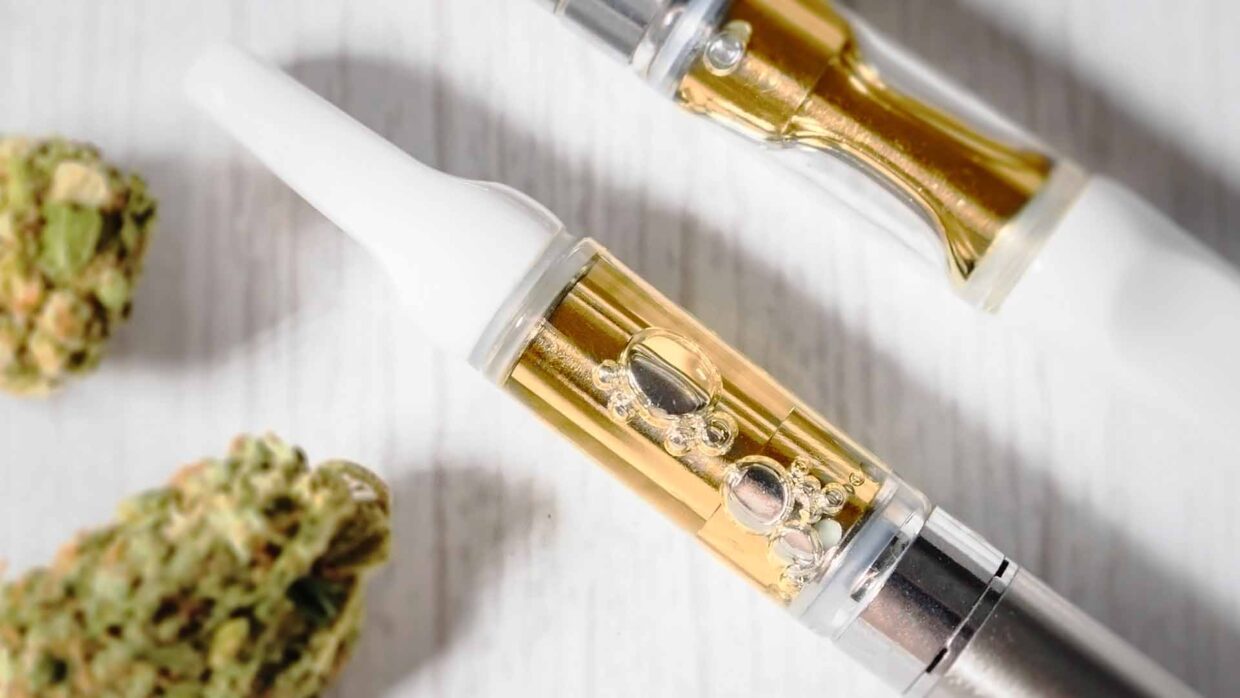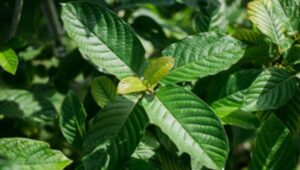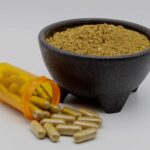THCP, a naturally occurring cannabinoid in cannabis, is making waves in the cannabis world. Closely related to THC, the compound behind cannabis’s psychoactive effects. THCP was only discovered in 2019 by a team of Italian researchers. It’s one of over 120 known cannabinoids, with many more likely waiting to be uncovered.
What sets THCP apart is its potential to amplify a strain’s psychoactive effects even more than THC. While research is still in its early stages, this cannabinoid has sparked curiosity and excitement. In this article, we’ll explore what we know so far about this intriguing newcomer to the cannabis scene.
What Is THCP?
Delta-9-tetrahydrocannabiphoral, or THCP, is a rare cannabinoid closely related to THC but found in very small amounts in the cannabis plant.
What sets THCP apart is its extraordinary interaction with the endocannabinoid system. Researchers discovered that THCP binds to CB1 receptors, a key part of this system—up to 33 times more effectively than regular THC. In simple terms, this means THCP could be as much as 33 times more potent than THC.
The secret to this heightened potency lies in its unique structure. THCP has a longer alkyl side chain, a string of carbon atoms, with seven carbons instead of the five found in THC. This extended chain allows THCP to latch onto receptors more securely, meaning even tiny amounts can produce noticeable effects throughout the body.
THCP vs THC
THC, short for tetrahydrocannabinol (or delta-9-THC), is a cannabinoid, the one responsible for getting you high.
THC’s molecular structure is like a key designed to fit perfectly into the CB1 receptors in your brain. When it locks in, it triggers the effects cannabis is famous for. It’s the same concept as a lock and key—other compounds with similar structures can also “fit” these receptors, creating comparable effects.
For now, ignore all the hexagons on the left, and check out the zig-zagging line on the right. This line represents a carbon chain, also called an alkyl group. For THC, this chain is 5 carbons long. THC has several variations, each with different chain lengths. Some occur naturally and have been discovered in specific cannabis strains, showcasing the plant’s incredible diversity.
Others have only been synthesized, or made in a lab. There may be more naturally occurring derivatives that scientists haven’t discovered yet.
If a THC derivative has a carbon chain shorter than three carbons, it can’t latch onto the CB1 receptor in your brain. In simple terms, this means it won’t produce any psychoactive effects. The THC derivative with 3 carbons is called tetrahydrocannabivarin, or THCV.
The longer the carbon chain, the more potent the molecule becomes—up to a point. Once it hits 8 carbons, the potency starts to taper off.
THCP benefits
- Limited Research: THCP is a newly discovered cannabinoid with minimal studies beyond the initial observations by its discoverers.
- Pain Relief: THCP may offer enhanced pain relief, particularly for patients requiring high THC levels, such as those using Rick Simpson Oil (RSO) for cancer treatment.
- Sedative Effects: High doses of THCP might produce sedative effects, potentially aiding insomnia and managing intractable pain.
- Lack of Definitive Evidence: Human effects and strain-specific THCP levels remain largely unknown.
While some describe THCP as more potent than THC, there is no conclusive proof of this increased potency when consumed. This cannabinoid shows promise but requires further research to fully understand its potential and safety.
Risks and Side Effects of THCP
When considering THCP as a potential option, it’s important to proceed with caution due to the limited research available. Here’s a breakdown of the potential risks and side effects:
1. Breast-feeding
Using THCP is likely unsafe while breast-feeding. The chemicals in cannabis pass into breastmilk and stay in breastmilk for longer than 6 weeks, even after cannabis use has been stopped.
These chemicals might slow down the development of the baby. Avoid all cannabis use if planning to breastfeed.
2. Bipolar disorder
Using THCP might make manic symptoms worse in people with bipolar disorder.
3. Heart disease
THCP might cause a fast heartbeat and high blood pressure. It might also increase the risk of having a heart attack.
4. Allergies to fruits and vegetables
THCP might increase the risk of an allergic reaction in people with allergies to foods like tomatoes, bananas, and citrus fruit.
5. Depression
Using THCP might increase the risk of depression. It can also worsen symptoms of depression and increase thoughts about suicide in those who already have depression.
6. Diabetes
THCP use might make it harder to control blood sugar levels. It might also increase the risk of long-term complications from diabetes. Until more is known, be cautious about using cannabis.
7. Epilepsy
High doses of THCP might cause seizures in people with epilepsy. There have been several reports where high doses of THCP have caused seizures.
8. Weakened immune system
Because THCP can be contaminated with fungus, there’s some concern that using THCP might put people with weakened immune systems at risk for fungal infections.
9. Liver disease
It is unclear if THCP worsens chronic liver disease. Until more is known, be cautious about using cannabis.
10. Lung diseases
THCP can make lung problems worse. Regular use might increase the risk of lung cancer. Some people develop a type of lung disease called emphysema.
11. Irregular heartbeat
THCP might increase the risk for dangerous irregular heartbeat in people at high risk for these conditions.
12. Schizophrenia
Using THCP might make symptoms of schizophrenia worse.
13. Quitting smoking
Using THCP might make it harder to quit smoking.
14. Stroke
Using THCP after having a stroke might increase the risk of having a second stroke.
15. Surgery
THCP affects the central nervous system. It might slow the central nervous system too much when combined with anesthesia and other medications during and after surgery. Stop using THCP at least 2 weeks before a scheduled surgery.
While THCP shows promise, its potency and the lack of comprehensive studies warrant a cautious approach. Always prioritize safety and consult with professionals when exploring new cannabinoids.
Precautions When Using THCP
1. When taken by mouth
THCP is possibly unsafe when used in large amounts or long term. Edible cannabis containing 50 mg or more of THC has been linked with serious side effects. Regularly taking large amounts of cannabis might cause cannabinoid hyperemesis syndrome (CHS).
CHS leads to severe nausea and vomiting that doesn’t respond to typical anti-nausea drugs. Also, using cannabis for at least 1-2 weeks can cause dependence.
2. When sprayed into the mouth
A specific cannabis extract (Sativex) is possibly safe. This is a prescription-only product in the UK and Canada. It is not approved in the US.
3. When inhaled
THCP is possibly unsafe when used in large amounts or long term. Smoking or vaping cannabis can cause breathing problems and is linked with an increased risk of heart attack and stroke.
Vaping products containing THC have been linked to serious lung injury. Regularly smoking cannabis may cause CHS and/or dependence.
4. Pregnancy
Using THCP is unsafe during pregnancy. Cannabis passes through the placenta and can slow the growth of the fetus and increase the risk for premature birth, stillbirth, childhood leukemia, abnormalities, or the need for intensive care after birth.
It can also lead to lower intelligence and emotional problems in the child when they grow up. It also increases the risk of anemia and high blood pressure while pregnant.
Is THC-P Legal?
The natural occurrence of THCP plays a key role in its legal standing. Thanks to a loophole in the 2018 Farm Bill, many THC derivatives sourced from hemp remain legally protected.
The 2018 Farm Bill draws a clear line between hemp and cannabis, even though they’re technically the same plant. Under this law, hemp is classified as cannabis with less than 0.3% THC content. While hemp and its derivatives are federally legal, cannabis remains categorized as a Schedule I drug.
Wrapping Up
THCP offers exciting potential with its unique potency and therapeutic possibilities, including pain relief and sedation. However, limited research highlights the need for caution and informed use.
As studies progress, THCP could significantly impact cannabis-based wellness and medicine. For now, consult professionals before us and stay updated on emerging insights.
Also, see:










